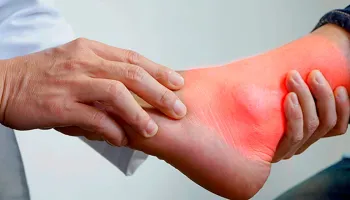Knee pain is a common issue faced by many individuals at different stages of life. Whether it’s due to injury, aging, or physical activity, knee pain can significantly impact one’s daily activities. Understanding the specific ICD-10 code for left knee pain can help healthcare professionals diagnose and treat the condition accurately.
In this guide, we will explore the various causes of left knee pain, the importance of ICD-10 codes in medical documentation, and the most common codes associated with left knee pain. Additionally, we will discuss treatments and management options for various knee injuries and conditions.
What is ICD-10 Code for Left Knee Pain?

The ICD-10 (International Classification of Diseases, 10th Edition) is a standardized system used by healthcare providers to classify and code diseases, injuries, and other health-related conditions. For left knee pain, the ICD-10 code varies depending on the specific cause of the pain, such as osteoarthritis, ligament injury, or patellofemoral pain syndrome.
When it comes to left knee pain, the ICD-10 code can fall into several categories, including:
- M17.12: Unilateral primary osteoarthritis, left knee
- S83.512: Sprain of anterior cruciate ligament of left knee
- M76.32: Iliotibial band syndrome, left leg
- M22.42: Patellar subluxation, left knee
Each of these codes is used to document different causes of knee pain, helping doctors and medical professionals develop a targeted treatment plan.
Key Diagnostic Tools for Left Knee Pain:
While the DX code is vital for understanding a patient’s condition, diagnostic tools help confirm the cause of knee pain. Some common diagnostic tests for knee pain include:
- X-Rays: X-rays are essential for detecting bone-related issues in the knee, like arthritis or fractures. They provide clear images of the joint and allow doctors to identify any structural changes or damage that may be causing pain.
- MRI (Magnetic Resonance Imaging):MRI scans are particularly helpful for detecting soft tissue damage, such as ligament tears or meniscal injuries. These scans provide detailed images of the knee’s internal structures, which can guide doctors in diagnosing and planning treatment for knee pain.
- Physical Exam: A physical exam helps doctors assess the knee’s range of motion, stability, and how it reacts to pressure. It can reveal signs of injury, inflammation, or weakness, guiding the physician toward the correct diagnosis and treatment approach.
Common Causes of Left Knee Pain:
Left knee pain can result from a variety of conditions, both short-term and long-term. Here are some common causes:
Osteoarthritis (OA):
One of the most common causes of knee pain, especially in older adults, is osteoarthritis. This condition happens when the cartilage in the knee wears down, causing pain, stiffness, and difficulty moving. The DX code for left knee osteoarthritis is M17.12, which indicates primary osteoarthritis in the left knee.
Meniscal Tears:
Another frequent cause of knee pain is a meniscal tear. The meniscus is a cartilage in the knee that can tear from injury or overuse. This can lead to swelling, pain, and limited mobility. For a torn meniscus in the left knee, the DX code is S83.2.
Anterior Cruciate Ligament (ACL) Injury:
ACL injuries are often seen in athletes and occur when the ligament that helps stabilize the knee joint is torn or overstretched. It usually leads to swelling, pain, and difficulty moving the knee. The DX code for left ACL sprain is S83.512.
Patellofemoral Pain Syndrome (PFPS):
Also known as “runner’s knee,” PFPS causes pain around the kneecap, especially when walking or running. It’s often a result of overuse or muscle imbalances around the knee. The DX code for left PFPS is M22.42.
Iliotibial Band Syndrome (ITBS):
ITBS occurs when the iliotibial band, a ligament on the outer side of the knee, becomes tight, causing pain on the outside of the knee. This condition often results from repetitive motion activities like running. The DX code for left ITBS is M76.32.
By understanding these common causes, it becomes easier to diagnose and treat the condition effectively. Each cause of knee pain has its unique treatment approach, so proper identification is essential for managing symptoms.
Types of DX Codes for Left Knee Pain:
- M17.12 – Unilateral Primary Osteoarthritis of Left Knee
This code is used for primary osteoarthritis in the left knee, a condition where the cartilage deteriorates, leading to pain, stiffness, and limited movement. It’s common in older adults. - S83.512 – Sprain of Anterior Cruciate Ligament (ACL) of Left Knee
This code indicates a sprain or tear of the ACL in the left knee, often caused by injury or overuse. ACL tears are common in athletes and can cause instability and pain. - S83.2 – Meniscal Tear, Left Knee
A meniscal tear occurs when the cartilage in the knee joint is torn. This code is used for tears in the left knee, which often cause swelling, pain, and difficulty moving the knee. - M76.32 – Iliotibial Band Syndrome (ITBS), Left Knee
ITBS involves pain along the outside of the knee due to tightness of the iliotibial band. This code helps diagnose ITBS in the left knee, which is often caused by overuse, especially in runners. - M22.42 – Patellofemoral Pain Syndrome (PFPS), Left Knee
PFPS, or “runner’s knee,” causes pain around the kneecap. This code is used for cases of PFPS in the left knee, which worsens with activities like running, squatting, or climbing stairs.
Also Read: Can Plantar Fasciitis Cause Knee Pain – A Complete Guide!
What is the DX code for left knee pain due to arthritis?
The DX code for left knee arthritis is M17.12, which refers to unilateral primary osteoarthritis of the left knee. This condition occurs when the cartilage in the knee joint breaks down over time, causing pain, stiffness, and reduced movement. As the knee becomes more worn, it can lead to swelling and difficulty walking.
This code helps doctors identify the specific condition for better treatment.The DX code M17.12 is essential for accurate diagnosis and treatment planning. It allows healthcare providers to assess the extent of damage to the knee joint and tailor interventions such as physical therapy or medication. Proper use of this code also ensures that insurance processes are streamlined for patients seeking treatment.
How DX Codes for Left Knee Pain Are Used in Treatment?
DX codes are critical in guiding the treatment of knee pain. They help doctors determine the exact issue, enabling them to choose the most effective treatment approach. Here’s how they’re used:
Rest and Ice:
For injuries like ligament sprains or meniscal tears, doctors often recommend rest and ice. These methods help reduce swelling and manage pain by controlling inflammation. Proper rest allows the body to heal, while ice therapy provides relief by numbing the affected area.
Physical Therapy:
Physical therapy is vital for knee pain recovery, especially with conditions like osteoarthritis or ACL injuries. Through targeted exercises, physical therapists strengthen the muscles around the knee, enhancing stability and flexibility. It can significantly reduce pain and improve function, aiding in long-term recovery.
Surgery:
In severe cases, such as significant ACL injuries or meniscal tears, surgery may be necessary. Surgical procedures like ACL reconstruction or meniscus repair are used to address significant damage. DX codes are crucial here for insurance purposes and to ensure that the right procedure is performed.
Medication:
For managing knee pain from conditions like arthritis or ITBS, pain relievers and anti-inflammatory medications (NSAIDs) are often prescribed. These medications help reduce swelling and pain, making it easier for patients to perform daily activities and participate in physical therapy for long-term relief.
Understanding ICD-10 Coding and Its Importance:
ICD-10 codes are used to document diseases, conditions, and injuries in a standardized way. The codes are crucial for:
- Billing and Insurance: Proper coding ensures that healthcare providers are reimbursed for their services and that insurance claims are processed smoothly.
- Data Collection: ICD-10 codes help in tracking health trends, allowing for research and public health planning.
- Medical Records: These codes ensure consistency in patient records across different healthcare providers, making it easier to monitor and manage treatment plans.
FAQS:
1. Can left knee pain be caused by overuse?
Yes, left knee pain can result from overuse, especially in athletes or people who perform repetitive activities. Conditions like patellofemoral pain syndrome or iliotibial band syndrome are commonly caused by repeated stress on the knee joint.
2. What are the symptoms of a meniscal tear?
Symptoms of a meniscal tear include pain, swelling, stiffness, and difficulty moving the knee. In some cases, a person might also hear a popping sound when the injury occurs, and the knee may lock or give way during movement.
3. Is surgery always needed for ACL injuries?
Not always. Some ACL injuries can be treated with physical therapy, rest, and rehabilitation. However, in cases of severe tears or for active individuals, surgery such as ACL reconstruction may be recommended to restore knee function and stability.
4. Can physical therapy help with osteoarthritis in the knee?
Yes, physical therapy can help manage osteoarthritis in the knee. It focuses on strengthening the muscles around the knee joint, improving flexibility, and reducing pain. Therapy can also improve the knee’s stability and range of motion, easing the impact of arthritis.
5. How long does it take to recover from a meniscus repair surgery?
Recovery from meniscus repair surgery typically takes about 4 to 6 months, depending on the severity of the tear and the patient’s overall health. Following the surgeon’s rehabilitation plan and avoiding excessive strain on the knee can help speed up recovery.
Conclusion:
In conclusion, understanding the ICD-10 codes for left knee pain is crucial for diagnosing and managing various knee conditions. By using these codes, healthcare professionals can pinpoint the exact cause of the pain, whether it’s osteoarthritis, ligament injury, or other issues. Proper diagnosis leads to more effective treatments such as physical therapy, medication, or, in severe cases, surgery. Early identification of knee problems using the appropriate DX code not only improves patient outcomes but also streamlines the treatment process and insurance claims for better healthcare management.






